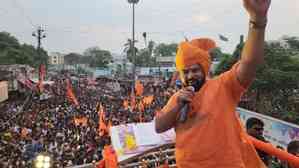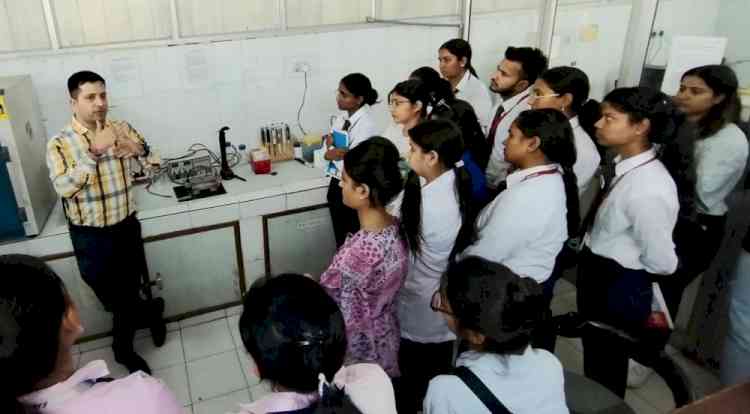Whatever the budget be, equities set for short-term breather (Column: Currency Corner)
As one would expect, Indian equities have decided to take a breather before the big budget announcement day (July 10). It is a clear case of profit booking as the sharp sell-off in the small-cap and mid-cap space came on the back of no major...

As one would expect, Indian equities have decided to take a breather before the big budget announcement day (July 10). It is a clear case of profit booking as the sharp sell-off in the small-cap and mid-cap space came on the back of no major disappointments post the railway budget on Tuesday (July 8). This is the most anticipated budget in recent years and Finance Minister Arun Jaitley must manage the market's expectations - which in this column's view have become quite overstretched. Markets hate uncertainty and although Jaitley may not be able to implement key reforms in his first budget, a clear road map will cheer the markets further to lifetime highs.
To begin with, we urgently need an investment revival. Since the credit crisis, public and private investment fell from the peak of 26.2 percent of the GDP in FY 2008 to 17.3 percent in FY 2013. The market will be looking for positive policy announcements on the FDI front. According to JP Morgan, historical trends suggest that there is a lag between liberalization in policy and an improvement in FDI inflows. FDI inflows seem to be more strongly correlated with global liquidity and business confidence. With global liquidity available in the system, this would be the ideal time to announce liberalization in FDI policy in sectors such as insurance and defence (where foreign investment is currently limited to 26 percent). JP Morgan estimates FDI inflows of $10 billion over the next five years if FDI limits in the insurance sector are raised from 26 percent to 49 percent. Another potential positive step by the government would be allowing portfolio investments in private sector banks up to 74 percent under the automatic route (currently this is capped at 49 percent under the automatic route, but investments up to 74 percent are allowed after subsequent government approval).
Further, market participants believe that the new government will finally power up the power sector. Take coal for example - India, which has roughly close to 290 tonnes of coal reserves, continues to import the commodity, being the world's fourth largest international buyer and paying a premium of up to 25 percent for its overseas purchases. Last year, we imported $15 billion worth of coal (the overall trade deficit was $154 billion) according to HSBC. Coal India, a public company that produces some 80 percent of the country's coal, could do with a potential overhaul. Like most PSUs, it needs to raise its game to meet India's challenges. Partial privatization could be on the agenda as a way to raise urgently needed investment funds but also to strengthen managerial discipline, according to HSBC. Other steps that could be taken to bring relief to this sector is concluding the debt restructuring scheme for the larger states and expediting competitive bidding for allocation of coal blocks for power generation, according to a Deloitte study.
On the taxation side of things, it would be a positive surprise if some concrete announcements are made on the Goods and Service Tax (GST). This would be a crucial step in the direction of streamlining the administration of indirect taxes in India. The market would be satisfied by just a road map to the GST being laid out as it would be unrealistic to assume GST would be implemented overnight. Further, some minor changes in the minimum tax free bracket might be announced to account for higher inflation. Another interesting development to watch out for is the taxation of the "super-rich". Last fiscal the government had introduced for a year, an additional surcharge of 10 percent on taxpayers with an annual income of over Rs.1 crore. The draft Direct Taxes Code (DTC) also proposes a higher tax rate of 35 percent on persons earning more than Rs. 10 crore a year. The finance minister must also address the issue of bringing back illegal assets abroad through the tax net. On corporate taxes, the industry has been demanding for the past few years a reduction in the corporate tax rate and MAT rate from their current 30 percent and 18.5 percent. In addition MAT on infrastructure companies and SEZs offsets the benefits that these companies get under various other tax incentives, according to JP Morgan. Several industry bodies have proposed MAT relief to these companies to attract more investment in infrastructure.
Mr. Jaitley must address the manufacturing sector, which experienced its worst performance in over 30 years (a contraction of 1 percent in IIP). Fiscal prudence will also be a key issue in the finance minister's speech. Restricting the subsidy bill to below 2 percent of the GDP from the current 2.26 percent should be enough to achieve the target of the fiscal deficit being 4.1 percent of the GDP. Remember that this metric is the focus point of rating agencies when gauging our credit worthiness. If indeed there is a global risk of funds flowing from emerging markets to the West, India can face significant bond outflows on the back of a weak debt rating. Social welfare schemes such as the food security bill and MNREGA as well as curbing fertilizer subsidies will be an important potential talking point in the finance minister's speech. On this point, it is important to remember that these schemes have been argued to be a major factor in rising rural inflation. Mr. Jaitley must also address the bottlenecks which have caused supply-side inflation if India is to achieve its target of CPI at 6 percent by 2016.
A few other issues market participants would be looking for the finance minister to touch upon are the revival of special economic zones (SEZs), on the process of how public sector banks whose non-performing assets have risen to more than Rs.2 lakh crore at the end of September 2013 are recapitalized, boosting infrastructure investment and SME financing and lastly education and health care.
So how does one trade this highly anticipated budget? Over the past few trading sessions, we have been witnessing similar price action to what we saw in the buildup to May 16. The only exception is that two heavyweight sectors - IT and pharmaceuticals - are also participating in the rally, thus making the relative broader strength of the market visible. A lot has been written on what Mr. Jaitley can do to revive the investment cycle and put growth back close to India's potential of around 7.5-8 percent over the next few years. Currency Corner feels that whatever the outcome of the budget, Indian equities are all set for a short term breather. We are poised to get a sharp rally (say towards 8,000-8,150 on the Nifty) if Mr. Jaitley drives through some key anticipated reforms but the market may most likely give up all its gains by the end of the trading session. This is a short-term trading call as this column believes that Indian equities are now in a secular bull market and every dip should be used as a buying opportunity using a bottom up approach. The intra-day highs seen on July 10th should be used to book profits. Short-term traders have bought the rumour and will sell the news on budget day.
(09.07.2014. Vatsal Srivastava is consulting editor for currencies and commodities with IANS. The views expressed are personal. He can be reached at [email protected])

 cityairnews
cityairnews 
















